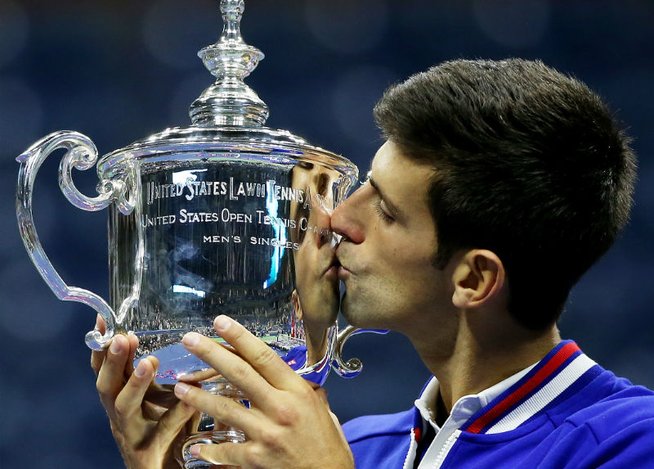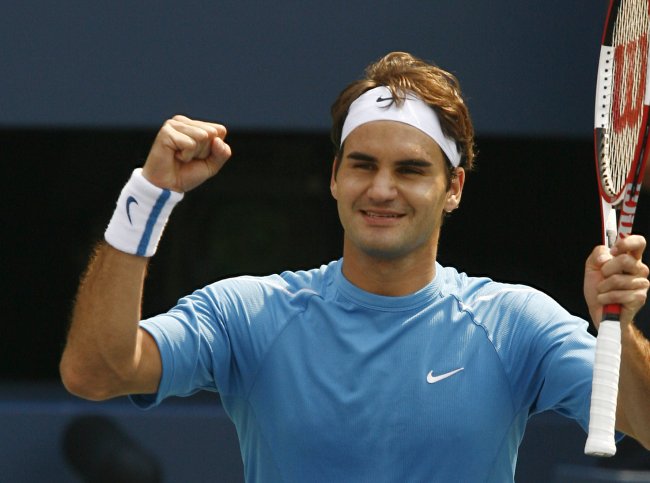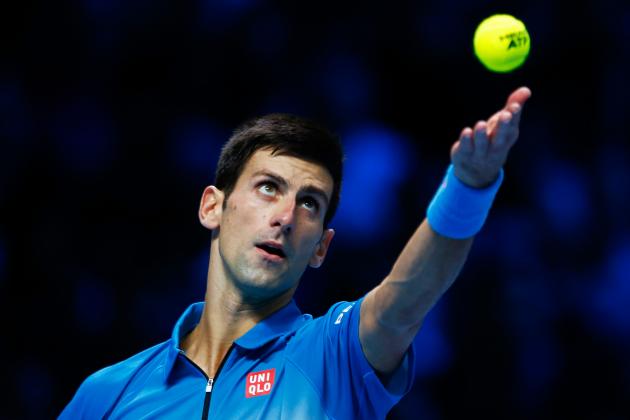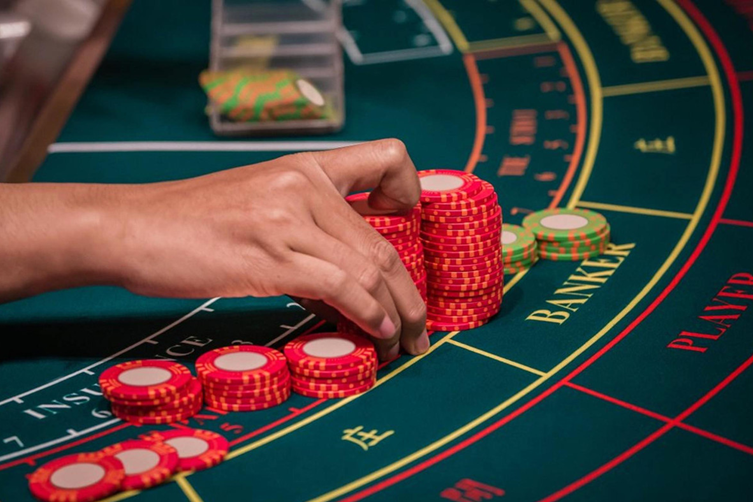If there was any doubt prior to 2015 that Novak Djokovic is one of the all-time legends of the game, look no further than this past year, which might go down as the greatest season in men’s tennis history. Fresh off capturing his fourth consecutive World Tour Finals championship, the World No. 1 continues to expand upon his domination of the ATP World Tour that saw him rack up three majors and six Masters 1000 titles.
Djokovic’s recent achievements are particularly impressive given that he has had to fight for many years to come out of the shadows of fellow legends Roger Federer and Rafael Nadal. Since 2011, he has earned his way to becoming the third member of tennis’ 21st-century triumvirate. He is seated at the very best table of Tennis Club Elite with his two rivals and Open era giants Rod Laver, Bjorn Borg and Pete Sampras.
His inclusion as an all-time legend has overcome some of the wavering from an interim period (2012 to ’14) when he was just as likely to lose a big title as to win it. He’s answered the critics by dismantling Andy Murray, leaping past Nadal and fending off Federer’s late-career charge.
The biggest question now is if Djokovic can be stopped by anyone else on at least a semi-consistent basis over the next few years. His confidence is soaring, and his work ethic is well grounded with personal commitment and perspective, and he is inciting many more legacy conversations with discussions that use the word “greatest.”
Specifically now, the jury is deliberating on Djokovic’s 2015 tennis year. Is this truly the greatest season of all time?

Ranking Other Legendary Seasons
One of the wonderful benefits to Djokovic’s run is that tennis fans can reach back to dust off the record books written for other historical legends. Since the Open era began in 1968, we’ve had nearly 50 years of superstars, style trends and innovations. The legends have had to adapt with tennis technology and fitness demands.
Each generation of tennis produces another wave of global competition pressing to mimic and surpass players they admired. Djokovic acknowledged as much after his latest title, saying in the trophy ceremony: ATP World Tour “As a kid growing up, you dream to be at tournaments like this and fighting for the biggest trophies in sport.”
Indeed, historical context must be understood as much as, if not more than, the numbers of titles or won-loss percentages. They are all essential pieces for framing intergenerational results, but at times these comparisons are apples and oranges.
Nevertheless, I’m going to start with a top-12 list I wrote in February 2012, after considering Djokovic’s 2011 season. For a review of the details, you may examine it here, but I’m going to present the most important features of each of those seasons and include Nadal’s 2013. Then, you may decide if one or more of those seasons is better than Djokovic’s pantheon-level results in 2015.
13. Rafael Nadal (2013) was 75-7, and he won 10 titles, including French Open and sweeping the entire U.S. Open series. A little more dominant than in 2008, especially with more Masters 1000 titles and besting nemesis Djokovic.
12. Ivan Lendl (1986) was 74-6, and he claimed nine titles, including French and U.S. Open titles. He missed the chance to play the Australian Open because it was not held that year in transition to its hard courts and January setting. Unfortunately, he got a lot of press for not winning Wimbledon.
11. Roger Federer (2005) was 81-4, winning 11 titles, but he lost two crucial matches at the Australian Open semifinal and French Open final to a precocious young kid named Nadal. It falls short of three-major immortality.
10. Bjorn Borg (1979) was 85-6, and he won 13 titles, including the French Open and Wimbledon. He “failed” once again to win the U.S. Open. Keep in mind that Borg and most players did not prioritize the Australian Open as an equal major. Had he competed and won that one, it could be considered right there as the best ever.
9. Roger Federer (2007) was 68-9, winning eight titles, including three majors. Once again, he was unable to defeat Nadal at the French Open. Some might rank this season as less dominant than Federer’s 2005 season, but three majors is better than two when adjusting for a slight drop in everything else.
8. Pete Sampras (1994) was 77-12, and he won 10 titles, including Australian Open and Wimbledon. He suffered from an injured left foot and lack of conditioning prior to getting upset at the U.S. Open. At this time, stars were less caught-up in prioritizing “Super Nine” or huge mid-majors. Their schedules were less efficient, and it was easier to ambush them when fatigued. Otherwise, Sampras was a monster in big matches.
7. Rod Laver (1969) was 106-16, with 18 titles, including all four majors. It’s not exactly the modern game, with much shorter matches and less grind there, but it’s hard to fathom playing 122 matches. Laver had three grass surfaces to win majors, which played into his attacking style. If majors is the criteria, it’s easy to argue this as the greatest season of all time.
6. Rafael Nadal (2010) was 71-10, with seven titles, including three majors. Nadal’s season was unique in being the only “surface slam,” that is capturing majors on clay, grass and hard courts. He had a slow start to the season by his standards, but the most dominant stretch ever from May through September, the peak of the tennis season. He faltered down the stretch, so this cannot crack the top five seasons of all time.
5. John McEnroe (1984) was 82-3, winning 14 titles, including Wimbledon and the U.S. Open. He infamously collapsed in the French Open final after a two-sets lead against Ivan Lendl, perhaps costing him the greatest season ever.
4. Roger Federer (2004) was 74-6, and he won 11 titles, including three majors, but lost in the French Open to a hobbled Gustavo Kuerten. This was the breakthrough when Federer destroyed a transitional era in the ATP. It might have been the biggest gap from one superstar above a field that did not feature a legendary second superstar. Federer set a new standard for Nadal and Djokovic to envision and challenge.
3. Novak Djokovic (2011) was 70-6, winning 10 titles, including three majors, but losing the French Open semifinal to Federer. There was the 41-match winning streak, and this was a time when Nadal and Federer were near their peaks. It was a better field than Federer defeated in 2004. Pete Sampras said in Palm Beach Post that Djokovic’s 2011 was, “At least in my lifetime, the best ever.”
2. Jimmy Connors (1974) was 93-4, and he won 15 titles, including three majors, but did not participate in the French Open. Yes, this was 40 years ago and largely against an aging field of pre-Open veteran stars, but Connors was the 1974 equivalent of 2004 Federer in how he lapped the field and changed the sport.
1. Roger Federer (2006) was 92-5, winning 12 titles, including three majors and another French Open final loss to Nadal. Other than that match, in which he was favored, it was almost a given for fans to tune in to see at what point in the first set his opponents would sag their shoulders and think about the locker room. It was the peak of Federer’s greatness, when nobody other than red-clay Nadal could slow him down.

Djokovic 2015 vs. Federer 2006
Djokovic’s final line for 2015: 82-6, 11 titles including three majors, six Masters 1000 titles and the WTF championship. That’s 10 enormous titles and one runner-up disappointment to Stan Wawrinka in the French Open final.
The accolades have been pouring in. Within seconds of Djokovic’s final title, ESPN’s TV commentator Robbie Koenig called it the best season he has seen. Gene Garber of ESPN wondered if Djokovic’s 2015 was the best ever a week before he won the WTF championship.
Go back two months ago and Djokovic himself said that 2015 was his best season ever, something that he reiterated after the WTF championship.
We’re going to keep things simple, at least with many complicated arguments. Hold your breath and just realize that the following winner probably depends on if you have more allegiance to either 2006 Federer or 2015 Djokovic. Or maybe you’re pro-Nadal and want to claim that 2010 was a far stronger field than 2006 or 2015, but we’re going to throw out the Spanish addition of making this a triangle.
If you like Federer’s 2006 season as the best ever, a few things stand out beyond the records. Federer was more dominant in crushing opponents—that is, overwhelming them with his nearly unstoppable serve and forehand.
His style was pleasing to watch, and tennis fans all over the world enjoyed watching him dominate with seemingly effortless ability. That’s what a champion was supposed to look like.
Federer’s numbers speak for themselves in the byline above, but the way he crushed and demoralized opponents was a rarity—the kind of dominance that Pete Sampras usually showed from 1993-97. Did Federer have a more dominant year than Djokovic in 2015? Yes.
But “more dominant” is not the same as “the greatest.”
If you like Djokovic’s 2015 season as the best ever, you can appreciate that he won 10 enormous titles (excluding Beijing) to Federer’s eight enormous titles. With all due respect to Doha, Halle, Tokyo and Basel, that leaves the Swiss with three majors, four Masters 1000 and the year-end Masters Cup.
Furthermore, Federer did not win a single title on clay, while Djokovic mixed in Monte Carlo and Rome. Djokovic had a greater variety of surfaces and more bigger titles if you want to select what you think is a better-weighted resume.
Tennis fans might point out that Djokovic won more big matches in 2015, matches in which he was not as often the overwhelming favorite. There are two ways to look at this: 1) Federer was so much more dominant that he did not have to play many close matches. 2) Djokovic proved that he could persevere in tight big matches and often against crowds who were rooting more for his opponents.
Often, Djokovic’s breathtaking combination of defense and offense would accumulate over several games and sets before it weakened and terminated his opponents. That takes incredible mental and physical fortitude, but the manner and style may not be as pleasing or easy on the eyes and expectations of tennis fans who want to measure greatness by margins and gaps.
The worst anyone can say about Djokovic is that his big-match success in 2015 cannot be called into question, unless you expected perfection at Roland Garros, Montreal and Cincinnati. Maybe you wished he had tried to bolster his his legacy with another Madrid title.
It also reminds us that the vast majority of tennis experts agree that Djokovic’s competition from 2011-15 has been much stiffer than Federer’s opponents in 2004-07. (Strictly speaking, how many would agree that 2011 was a stronger field than 2015 for Djokovic to tackle? I told you this was complicated.) We’re not going to measure all of the key opponents to make a case either way, but most nonpartisan tennis fans would side with Djokovic in this regard.
So give 2006 Federer the nod for being more dominant against his competition, especially on fast surfaces, but give Djokovic props for a greater resume of enormous championships on a greater variety of surfaces and stiffer opponents.
The choice is how you choose to define terms like “dominance,” “greatness” and “legacy.” What do you remember? How do you watch tennis now? Given the past decade of legendary champions, why does one stand out more than another? (OK, we can bring Nadal back into this if you wish.)
Belief in people and accomplishments is a powerful perspective, and it will always depend most on which side people want to take, but it’s hard not to name King Novak’s 2015 season as the greatest ever.



